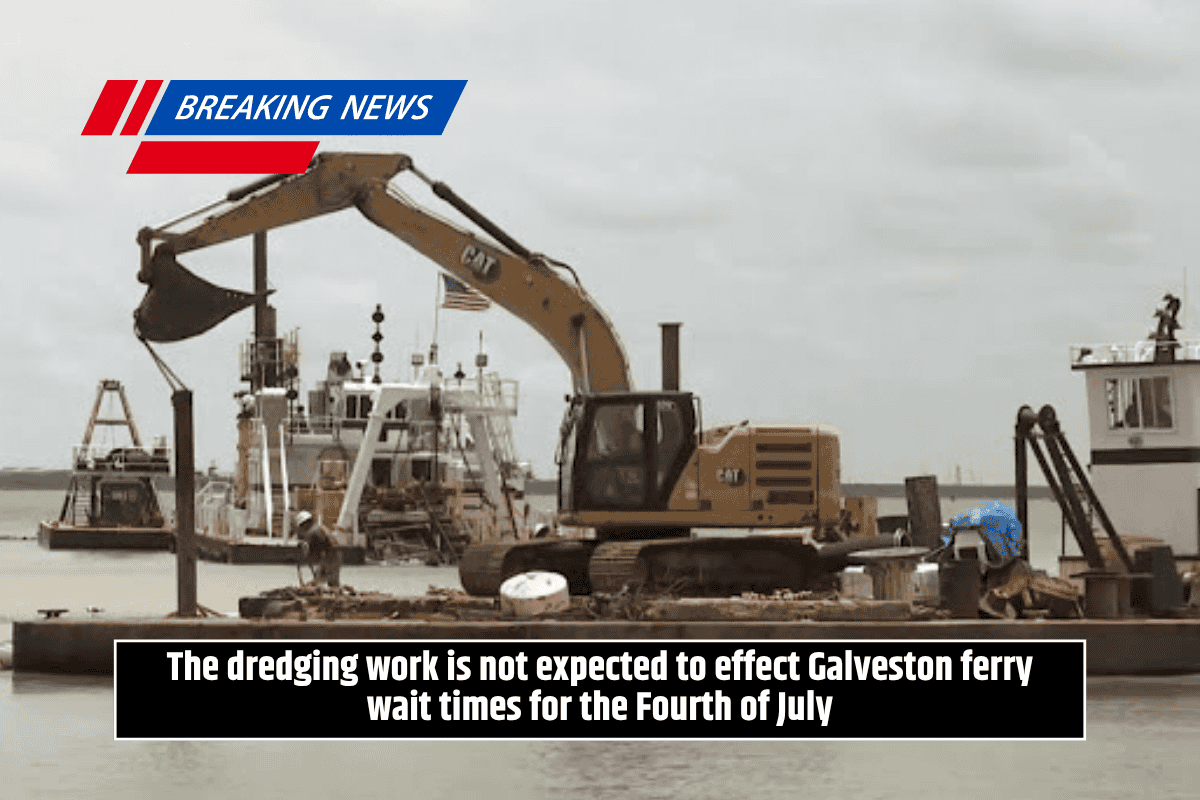As crews continue dredging the area around the Port Bolivar ferry landing, Texas Department of Transportation (TXDOT) officials have assured the public that ferry operations will not be impacted during the busy 4th of July weekend.
The dredging is part of a vital project to maintain navigable waters for ferry traffic, which includes vehicles of all sizes, including heavy trucks and 18-wheelers. Here’s an update on the ongoing dredging efforts and their importance to the Port Bolivar area.
Ongoing Dredging Work at Port Bolivar
The Texas Department of Transportation (TXDOT) and its partners, including the US Army Corps of Engineers and Callan Marine, have been working since May on dredging efforts around the Port Bolivar ferry landing.
While the crews will be working through the 4th of July weekend, they have ensured that ferry operations will not be affected, allowing for a smooth experience for travelers over the holiday.
Danny Perez, a spokesperson for TXDOT, emphasized that the goal of the dredging work is to maintain a depth of 16-18 feet around the Bolivar harbor to ensure smooth ferry operations.
The team is focused on maintaining the channel to prevent problems like shoaling, which is the buildup of sediment that can impede navigation.
Plans for Future Dredging Projects
While the current dredging cycle is focused on achieving the necessary depth of 16-18 feet, a second dredging project is scheduled to start in October. This future project will aim to deepen the area further, bringing the depth to between 22-24 feet.
This deeper channel is essential for accommodating a variety of vehicles, including large trucks and heavy machinery, that use the ferry.
Why Dredging Is Essential for Ferry Operations
Dredging the waterway is an annual necessity to ensure the ferry system operates smoothly. Perez noted that without regular dredging, the buildup of sediment can create significant obstacles for ferry boats, particularly large vehicles.
A recent incident during Memorial Day weekend, when the ferry Robert C. Lanier hit a sandbar and had to be nudged back into deeper water by a tugboat, highlighted the importance of keeping the channel clear.
“We’re not just a ferry that carries cars,” said Perez. “We carry 18-wheelers, we carry heavy vehicles, so they can be weighted down. We want to make sure the channel is clear.”
Current Dredging Progress
As of now, the dredging crews have removed 99,108.5 cubic yards (CY) of sediment, with an additional 40,891.5 CY still to be removed during this current cycle. This effort is crucial to maintaining the depth of the waterway, particularly around the Bolivar Flare area, which is known for severe shoaling.
According to a TXDOT report to the Texas Legislature, the Bolivar Flare is one of the most problematic spots along the Gulf Coast Intercoastal Waterway for sediment buildup.
The ongoing dredging efforts near the Port Bolivar ferry landing are vital to maintaining safe and efficient ferry operations. As crews work through the holiday weekend, they’re focused on ensuring that the waterway remains clear for all types of vehicles, including large trucks.
With plans for further dredging in October, the goal is to keep the channel navigable and prevent incidents like the one that occurred during Memorial Day weekend. Travelers can rest assured that their ferry experience will remain unaffected over the 4th of July weekend.
